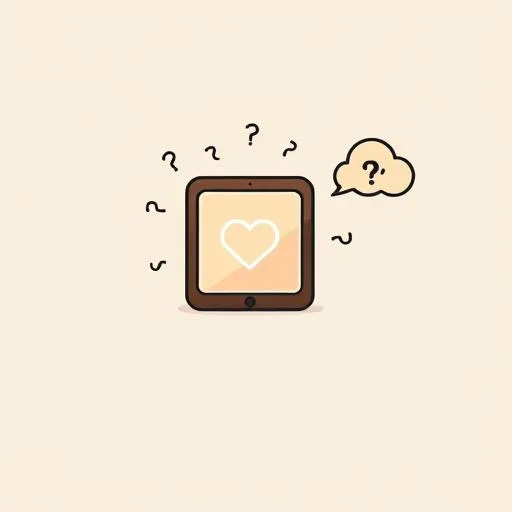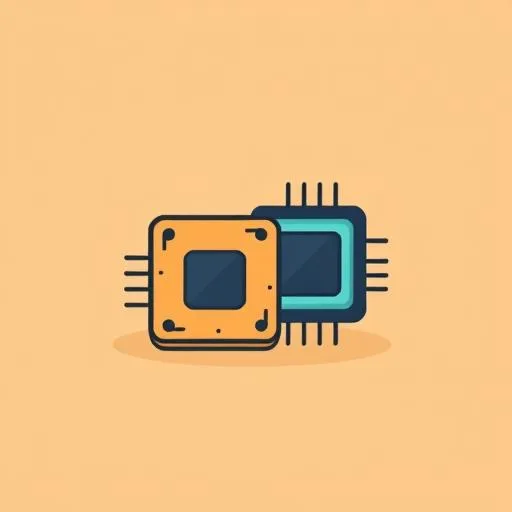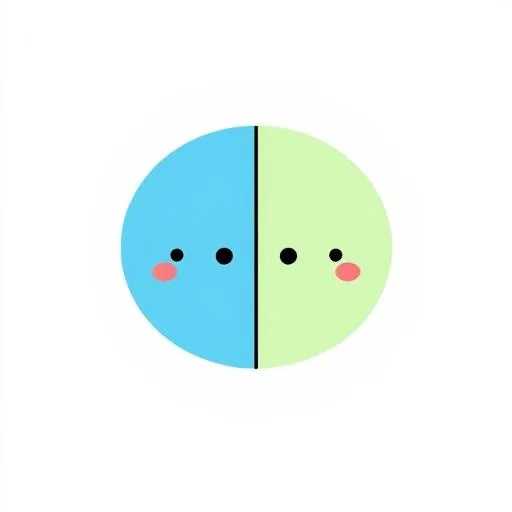
There’s something truly special about watching a child’s eyes light up with discovery! Just the other day, my seven-year-old daughter asked me, “Appa, how does my tablet know what I want to watch next?” You know how kids ask those questions that stop you in your tracks? Growing up with both Korean practicality and Canadian openness to innovation, I’ve learned that simple questions like hers can open doors to complex understanding. That moment made me think about the news I’d read regarding ASML and Mistral AI partnering to explore new frontiers where semiconductor technology meets AI—the very technologies that power our children’s daily interactions!
What Is the ASML-Mistral AI Partnership and Why Does It Matter?

Picture this: you’re creating the most intricate Lego city you can imagine, but instead of colorful plastic bricks, you’re working on a microscopic scale—building components that power everything from smartphones to medical devices! That’s the fascinating world of semiconductors, where companies like ASML create the specialized equipment needed to manufacture these tiny technological wonders. Now, imagine pairing that incredible expertise with the artificial intelligence capabilities of a cutting-edge company like Mistral AI. It really makes you think, doesn’t it? That’s exactly what’s happening in their strategic partnership announced recently!
With ASML investing about $1.5 billion into Mistral AI, we’re witnessing a powerhouse collaboration where semiconductor manufacturing expertise meets groundbreaking AI solutions! It’s like having master chefs and gardeners combine their talents to create something entirely new. Growing up in a household that valued both tradition and innovation, I appreciate how such partnerships bridge different worlds of knowledge. ASML’s equipment helps create the chips that run our devices, and Mistral AI’s technology could help make those chips even more powerful and efficient than we ever imagined!
This partnership isn’t just about business—it’s about pushing the boundaries of what’s technologically possible! When ASML uses Mistral AI’s advanced algorithms to improve their semiconductor manufacturing process, they’re not just making better chips; they’re helping create the foundation for future technologies that our children will grow up with. The research in this area shows that computational lithography—the process of designing semiconductor circuits—is becoming so complex that we need AI to solve problems that would take humans thousands of years to figure out manually. The more I learn about this, the more I believe that the next generation will approach challenges with entirely new thinking patterns!
How Do We Prepare Kids for a Tech-Driven World?

Watching our children navigate this rapidly changing technological landscape can be both exhilarating and a little intimidating, don’t you think? My daughter’s generation will grow up with technologies we can barely imagine today! That’s why fostering curiosity and adaptability might be the greatest gifts we can give them. The ASML-Mistral partnership beautifully reminds us that innovation happens at the intersection of different fields and perspectives—not just in specialized silos. Have you tried implementing 10 minutes of ‘tech-talk’ each day where your child explains what they learned from an educational app? This simple routine can give you great insight into their thinking while building communication skills.
When our little ones explore through play—whether they’re building with blocks, creating artwork, or even experimenting with educational apps—they’re developing precisely the skills that drive innovation: problem-solving, creativity, and persistence. These are the same qualities that enable breakthrough partnerships like the one between ASML and Mistral AI to flourish! Our children are naturally brilliant problem-solvers! Every time my daughter figures out how to make her toys interact in new ways, I’m reminded that this kind of creative experimentation is precisely what will prepare her for a future full of unknown technologies.
Research shows that kids who engage in open-ended, discovery-based learning develop stronger neural connections that support future learning across all domains. It’s not about teaching them specific technologies—it’s about nurturing their natural curiosity to ask “why” and “how” and “what if.” What are ways you’ve encouraged flexibility in your child’s thinking? I find that when we follow my daughter’s lead in activities rather than directing them, she comes up with solutions that surprise me every time.
What if we approached our children’s education as a journey of endless curiosity rather than a checklist of skills? The research is compelling—one beautiful aspect of childhood development is that young brains are particularly adept at pattern recognition and learning through play. By encouraging exploration in various domains—from music to storytelling to hands-on building projects—we’re giving our children the mental flexibility to adapt to whatever technological landscapes they’ll encounter in the future. Think of the possibilities! I’ve noticed how my daughter’s ability to switch between her tablet art project and real-world painting actually strengthens her creative thinking across both mediums.
How Can We Balance Screen Time with Real-World Learning?

In our digital age, finding that sweet spot between technology and real-world experiences has become one of the greatest parenting challenges! My daughter absolutely loves her educational games and shows, but nothing compares to the sparkle in her eyes when we’re exploring nature on a neighborhood walk or building an elaborate pillow fort together in the living room. That balance—between digital and real-world experiences—is something so many of us parents grapple with daily. Growing up, I experienced both strict limitations on technology and very open approaches to it, helping me value balance in my own parenting.
The partnership between ASML and Mistral AI gives me hope—it highlights how technology can enhance real-world capabilities, not replace them! Their work aims to make semiconductor manufacturing more efficient and effective—technology that serves human needs rather than distracting from them. Similarly, for our children, technology should enhance their experiences and learning, not become the sole focus. Try implementing ‘tech passports’ in your home where screen time is earned through reading, creative play, or outdoor activities. This system培养了责任感的同时也鼓励了多样化的兴趣发展。
Creating boundaries around screen time isn’t about restriction—it’s about mindful intentionality. When we model balanced tech habits ourselves and engage with our children during their digital activities, we transform passive consumption into interactive learning. Simple rituals like “tech-free meals” or “device-free family walks” can create pockets of connection that strengthen relationships and foster presence in our busy lives. I’ve found that designating specific areas in our home as ‘tech-free zones’ helps create natural boundaries without making children feel restricted.
Research in cognitive development consistently shows that children learn best when they have opportunities to apply digital concepts in tangible ways. That might mean using an educational app to learn about stars, then heading outside to identify constellations together. Or following a video tutorial to build a simple structure using household items. This connection between digital knowledge and physical experience builds deeper understanding—like connecting the dots! When my daughter learned about animal classification on her tablet, we spent our weekend at the local zoo actively categorizing what we saw, making the abstract concepts suddenly very real and exciting.
How Do Today’s Tech Partnerships Shape Tomorrow’s Childhood?

Partnerships like the one between ASML and Mistral AI don’t just create technology—they shape the possibilities of tomorrow. Today’s breakthroughs in AI and semiconductor engineering may become tomorrow’s educational tools, toys, and experiences that our children take for granted. That thought fills me with both excitement and humility! The more I reflect on how rapidly technology evolves, the more I focus on helping my daughter develop adaptability rather than specific technical skills.
When we think about preparing our children for their future, it helps to remember that many of tomorrow’s jobs don’t exist yet. The World Economic Forum estimates that 65% of children entering primary school today will end up in jobs that don’t currently exist. That statistic might seem overwhelming at first glance, but it’s actually incredibly liberating! It means the most valuable skills we can nurture are adaptability, creativity, and lifelong learning. The past summer when we visited my parents back home, seeing how my daughter adapted to both traditional Korean values and modern tech gadgets reinforced my confidence in her ability to navigate whatever future comes her way.
One approach I find valuable is reframing “preparation” as “empowerment.” Rather than trying to predict specific skills our children will need, we can focus on empowering them with confidence in their ability to learn anything. Partnerships like ASML-Mistral show us that innovation thrives when different domains intersect—when technical knowledge meets creative vision, when engineering expertise combines with artistic sensibility. Encouraging our children to explore diverse interests creates those very intersections in their developing minds.
A child who loves coding and music might grow up to create the next breakthrough in sound engineering. A young person fascinated by both art and biology might revolutionize medical imaging. The possibilities are truly endless! How do you see your child’s unique interests potentially shaping their future path? In our family, we’ve started a “dream journal” where my daughter can freely express and explore her ideas without judgment, allowing her imagination to run wild with possibilities. The most rewarding part has been watching her connect seemingly unrelated interests into creative solutions—much like how ASML and Mistral are combining their expertise!
Source: (PR) ASML and Mistral AI Enter Strategic Partnership, TechPowerUp, 2025/09/09
Latest Posts
